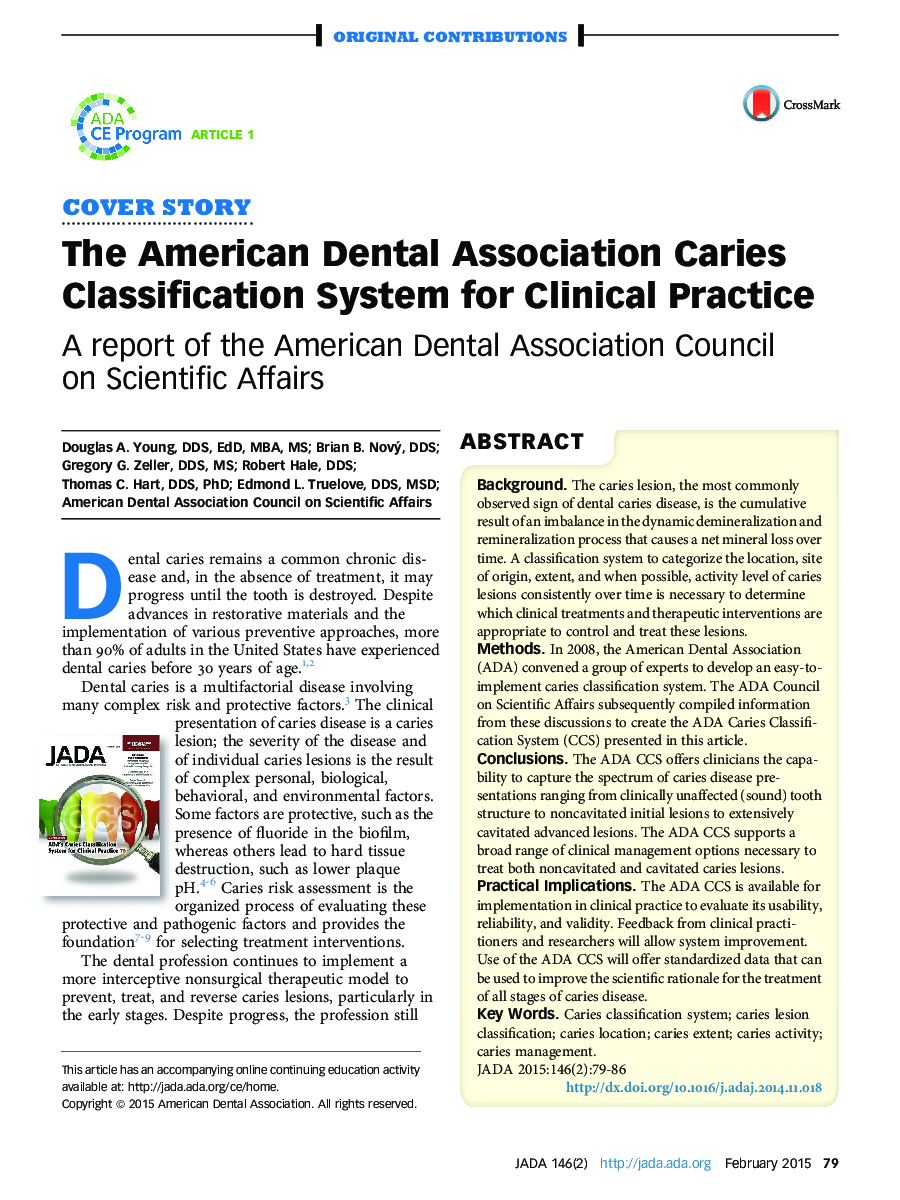| Article ID | Journal | Published Year | Pages | File Type |
|---|---|---|---|---|
| 3136881 | The Journal of the American Dental Association | 2015 | 8 Pages |
BackgroundThe caries lesion, the most commonly observed sign of dental caries disease, is the cumulative result of an imbalance in the dynamic demineralization and remineralization process that causes a net mineral loss over time. A classification system to categorize the location, site of origin, extent, and when possible, activity level of caries lesions consistently over time is necessary to determine which clinical treatments and therapeutic interventions are appropriate to control and treat these lesions.MethodsIn 2008, the American Dental Association (ADA) convened a group of experts to develop an easy-to-implement caries classification system. The ADA Council on Scientific Affairs subsequently compiled information from these discussions to create the ADA Caries Classification System (CCS) presented in this article.ConclusionsThe ADA CCS offers clinicians the capability to capture the spectrum of caries disease presentations ranging from clinically unaffected (sound) tooth structure to noncavitated initial lesions to extensively cavitated advanced lesions. The ADA CCS supports a broad range of clinical management options necessary to treat both noncavitated and cavitated caries lesions.Practical ImplicationsThe ADA CCS is available for implementation in clinical practice to evaluate its usability, reliability, and validity. Feedback from clinical practitioners and researchers will allow system improvement. Use of the ADA CCS will offer standardized data that can be used to improve the scientific rationale for the treatment of all stages of caries disease.
